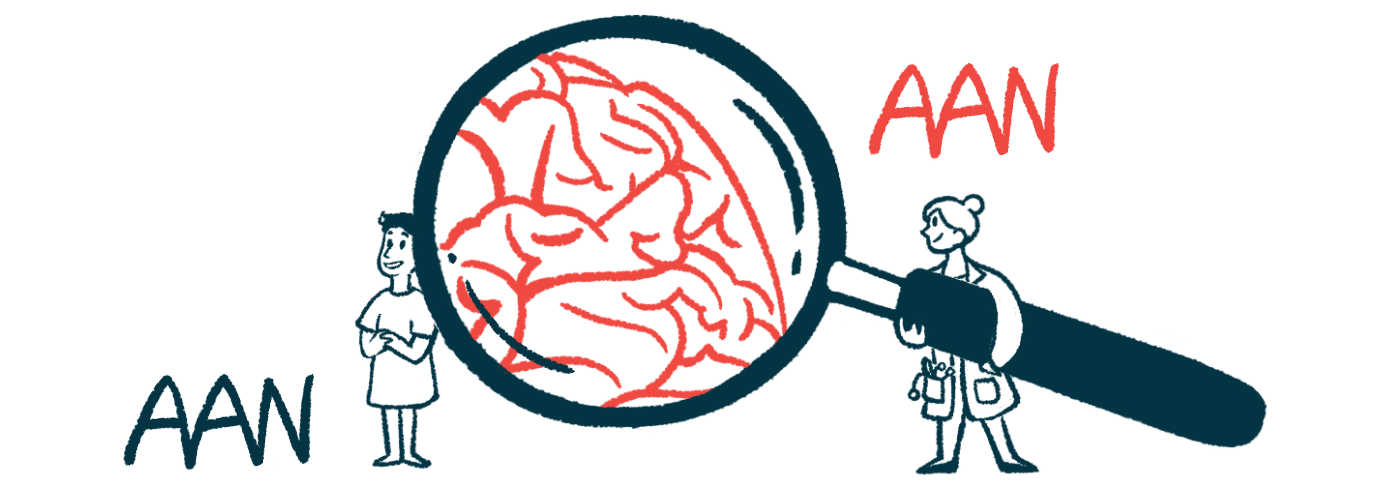AAN 2023: Long-term soticlestat found in trial to ease Dravet seizures
Seizure frequency reduced over 50% in 2 years of treatment, data show
Written by |

Long-term treatment with soticlestat was found to reduce seizure frequency by more than 50% in most Dravet syndrome patients, according to about two years of data from the ongoing ENDYMION 1 clinical trial.
“Soticlestat was associated with sustained seizure reductions over the interim period presented here,” researchers wrote.
Yuan Yao, MD, from the Takeda Development Center Asia, discussed the findings at last week’s annual meeting of the American Academy of Neurology (AAN), in a talk titled “Long-Term Treatment Effects of Soticlestat in Patients with Dravet Syndrome or Lennox–Gastaut Syndrome: Interim Data from the ENDYMION 1 Trial.”
The work was funded by Takeda Pharmaceuticals, which in 2021 acquired the rights to develop soticlestat for Dravet and Lennox-Gastaut syndrome (LGS), another rare childhood seizure disorder.
Ongoing trials testing safety, efficacy of soticlestat
The therapy candidate works by blocking CH24H, an enzyme that regulates the activity of a seizure-related brain signaling molecule called glutamate. In Dravet mouse models, the therapy was shown to reduce seizures and prevent the animals’ death.
Soticlestat “is an investigative anti-seizure medication with a mechanism of action different from any approved” anti-seizure therapy, Yao said.
An earlier, international Phase 2 trial, called ELEKTRA (NCT03650452), tested soticlestat against a placebo in 141 children, ages 2 to 17, with Dravet or LGS. That study lasted 20 weeks, or about five months: eight weeks were used to optimize weight-based dosages of the therapy, and the 12 remaining weeks, or about three months, were a period of maintenance treatment.
Most of the patients in the treatment group received soticlestat at a dose of 300 mg twice daily, in addition to standard treatment.
Top-line results showed soticlestat significantly outperformed a placebo at reducing seizure frequency.
Participants who completed at least 10 weeks in the ELEKTRA study had the option to enroll in an open-label extension trial — ENDYMION 1 (NCT03635073), slated to run through November 2024.
After a week or two for dose optimization, all ENDYMION 1 participants receive a stable dose of soticlestat, up to 300 mg twice per day, for up to six years.
Yao’s presentation covered ENDYMION 1’s interim data. The analysis included 130 patients — 47 with Dravet and 83 with LGS. Dravet patients received soticlestat treatment for a median of about 80 weeks, or about 1.5 years, and up to 134 weeks, or nearly three years.
The results showed that soticlestat was generally well-tolerated, and “most patients tolerated the highest dose level well,” Yao said.
About half (44.7%) of Dravet patients, and a similar proportion of those with LGS, experienced adverse events, or side effects, related to soticlestat. Common side effects included reduced appetite, seizures, and sleepiness; each of these occurred in no more than 10% of all patients.
Treatment-related serious side effects were reported in one Dravet patient and five LGS patients. Three Dravet patients and 10 LGS patients chose to stop treatment due to side effects that were mostly related to seizures, “so you can interpret them as lack of efficacy,” Yao said.
At the start of ELEKTRA, Dravet patients were experiencing a median of 7.5 convulsive seizures per 28 days (about a month). In the first three months of soticlestat treatment, the median convulsive seizure frequency decreased by 33.7% in this patient group.
Among the 28 Dravet patients with available data by weeks 49 to 60 — after about a year on the therapy — there was a 47.8% drop in monthly seizure frequency. After about two years on soticlestat, the median seizure frequency had decreased by 58.2% among the 22 patients with available data.
“We can see that there has been sustained convulsive seizure reduction in [Dravet syndrome] patients during the two-year period,” Yao said. Similar findings were observed for the frequency of all seizures (convulsive and other types). A reduction in seizure frequency also was seen among LGS patients on long-term soticlestat.
A total of 19 Dravet patients (40.4%) and 37 LGS patients (44.6%) are still in the ongoing trial, while the rest have discontinued. The main reported reason for discontinuation was a perceived lack of efficacy, as judged by clinicians or the patients’ parents.
However, among Dravet patients who discontinued due to perceived lack of efficacy, data still show “a sizeable median seizure reduction” compared with before soticlestat treatment, Yao said. Some patients discontinued treatment when experiencing a more than 50% drop in seizure frequency.
“Clearly, there were other reasons” for patients stopping soticlestat, Yao said, highlighting a need for further investigation.
We can see that there has been sustained convulsive seizure reduction in [Dravet syndrome] patients during the two-year period.
Takeda is now enrolling a Phase 3 trial called SKYLINE (NCT04940624) that aims to recruit about 142 Dravet patients, ages 2 to 21. Participants will be given either soticlestat or a placebo, on top of standard of care therapy. The study’s main goal is to assess the impact of treatment on seizure frequency after 16 weeks, or about four months.
Participants who complete the initial placebo-controlled study will have the option to enroll in an open-label extension study (NCT05163314), in which all are being treated with soticlestat and monitored for long-term outcomes.
SKYLINE is now recruiting participants with the rare disease at dozens of sites around the world.







